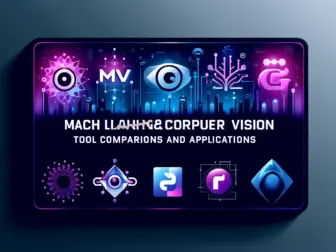Tag - Real-Time Object Detection
Blog , May 29, 2024 , Computer Vision, Embedded Applications, Keras, Machine Learning, Model Training, OpenCV, OpenMV, PyTorch, Real-Time Object Detection, TensorFlow
Exploring the Advancements in Real-Time Object Detection Technology Real-time object detection is a cutting-edge technology that allows computers to identify and locate objects in images or videos in real-time. This technology has a wide range of applications, from surveillance and security systems to autonomous vehicles and augmented reality. With the increasing demand for efficient and accurate object detection systems, researchers and engineers are constantly working on improving the performance and capabilities of these systems. One of the key advancements in real-time object detection technology is the development of deep learning algorithms, specifically convolutional neural networks (CNNs). CNNs are a type of artificial neural network that have shown remarkable success in image recognition tasks. By training CNNs on large datasets of labeled images, researchers have been able to create highly accurate object detection models that can identify a wide range of objects across different categories. Another important aspect of real-time object detection is the speed at which the system can process and analyze images or videos. Traditional object detection systems often struggled with processing large amounts of data in real-time, leading to delays and inefficiencies. However, recent advancements in hardware acceleration, such as graphics processing units (GPUs) and field-programmable gate arrays (FPGAs), have significantly improved the speed and efficiency of object detection systems. Furthermore, the introduction of lightweight object detection models, such as Single Shot MultiBox Detector (SSD) and You Only Look Once (YOLO), has further enhanced the real-time performance of these systems. These models are designed to be fast and efficient, making them ideal for applications where speed is crucial, such as autonomous vehicles and robotics. One of the challenges in real-time object detection is dealing with occlusions, cluttered backgrounds, and variations in lighting conditions. Researchers have been working on developing robust algorithms that can handle these challenging scenarios and provide accurate object detection results. Techniques such as data augmentation, transfer learning, and ensemble learning have been employed to improve the robustness and generalization capabilities of object detection models. In conclusion, real-time object detection technology has made significant strides in recent years, thanks to advancements in deep learning algorithms, hardware acceleration, and lightweight models. As the demand for efficient and accurate object detection systems continues to grow, researchers and engineers will continue to push the boundaries of what is possible in this field.
Exploring the Advancements in Real-Time Object Detection Technology
Real-time object detection is a cutting-edge technology that allows computers to identify and locate objects in images or videos in real-time. This technology has a wide range of applications, from surveillance and security systems to autonomous vehicles and augmented reality. With the increasing demand for efficient and accurate object detection systems, researchers and engineers are constantly working on improving the performance and capabilities of these systems.
One of the key advancements in real-time object detection technology is the development of deep learning algorithms, specifically convolutional neural networks (CNNs). CNNs are a type of artificial neural network that have shown remarkable success in image recognition tasks. By training CNNs on large datasets of labeled images, researchers have been able to create highly accurate object detection models that can identify a wide range of objects across different categories.
Another important aspect of real-time object detection is the speed at which the system can process and analyze images or videos. Traditional object detection systems often struggled with processing large amounts of data in real-time, leading to delays and inefficiencies. However, recent advancements in hardware acceleration, such as graphics processing units (GPUs) and field-programmable gate arrays (FPGAs), have significantly improved the speed and efficiency of object detection systems.
Furthermore, the introduction of lightweight object detection models, such as Single Shot MultiBox Detector (SSD) and You Only Look Once (YOLO), has further enhanced the real-time performance of these systems. These models are designed to be fast and efficient, making them ideal for applications where speed is crucial, such as autonomous vehicles and robotics.
One of the challenges in real-time object detection is dealing with occlusions, cluttered backgrounds, and variations in lighting conditions. Researchers have been working on developing robust algorithms that can handle these challenging scenarios and provide accurate object detection results. Techniques such as data augmentation, transfer learning, and ensemble learning have been employed to improve the robustness and generalization capabilities of object detection models.
In conclusion, real-time object detection technology has made significant strides in recent years, thanks to advancements in deep learning algorithms, hardware acceleration, and lightweight models. As the demand for efficient and accurate object detection systems continues to grow, researchers and engineers will continue to push the boundaries of what is possible in this field.
Please let me know if you would like me to include more information or details on any specific aspect of real-time object detection.
